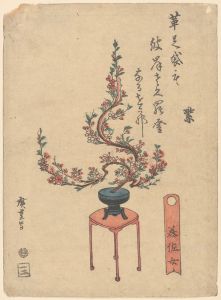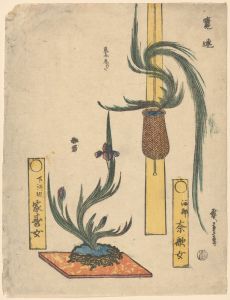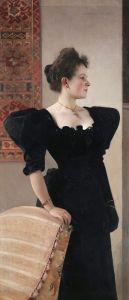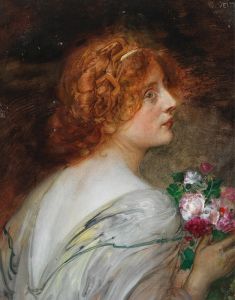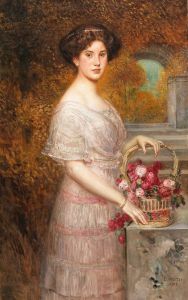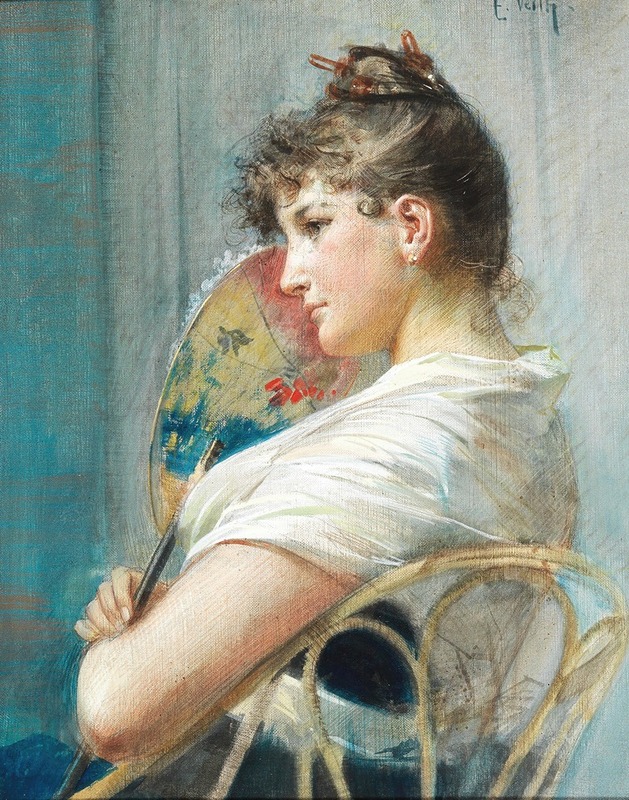
The Japanese Fan
A hand-painted replica of Eduard Veith’s masterpiece The Japanese Fan, meticulously crafted by professional artists to capture the true essence of the original. Each piece is created with museum-quality canvas and rare mineral pigments, carefully painted by experienced artists with delicate brushstrokes and rich, layered colors to perfectly recreate the texture of the original artwork. Unlike machine-printed reproductions, this hand-painted version brings the painting to life, infused with the artist’s emotions and skill in every stroke. Whether for personal collection or home decoration, it instantly elevates the artistic atmosphere of any space.
Eduard Veith was an Austrian painter known for his contributions to the art world during the late 19th and early 20th centuries. He was born on March 30, 1858, in Neutitschein, which is now known as Nový Jičín in the Czech Republic. Veith's artistic journey began with his studies at the Academy of Fine Arts in Vienna, where he honed his skills and developed a style that would later define his career.
One of Veith's notable works is "The Japanese Fan," a painting that reflects his interest in incorporating elements of exoticism and cultural motifs into his art. This painting is a representation of the Japonisme movement, which was popular in Europe during the late 19th century. Japonisme was characterized by the fascination with Japanese art and design, which had been introduced to the Western world following Japan's opening to international trade in the mid-1800s.
"The Japanese Fan" showcases Veith's ability to blend Western artistic techniques with Eastern themes. The painting features a woman holding a Japanese fan, a common motif in Japonisme that symbolizes the allure and mystery of the East. The fan itself is intricately designed, reflecting the detailed craftsmanship typical of Japanese art. Veith's use of color and composition highlights the elegance and grace of the subject, while also emphasizing the cultural exchange between East and West.
Veith's work during this period often included elements of symbolism and allegory, and "The Japanese Fan" is no exception. The painting can be seen as a reflection of the broader cultural currents of the time, where Western artists were increasingly looking to the East for inspiration and new perspectives. This cross-cultural interaction was not only evident in visual arts but also in literature, music, and other forms of creative expression.
Throughout his career, Eduard Veith was celebrated for his ability to capture the essence of his subjects, whether they were portraits, landscapes, or genre scenes. His works were exhibited in various prestigious venues, and he gained recognition as a prominent figure in the Viennese art scene. Veith's contributions to art were not limited to painting alone; he also worked on decorative projects, including murals and interior designs, which further showcased his versatility as an artist.
Eduard Veith passed away on March 18, 1925, in Vienna, leaving behind a legacy of artistic achievement that continues to be appreciated by art enthusiasts and historians alike. "The Japanese Fan" remains a testament to his skill and his ability to bridge cultural divides through art. While specific details about the painting's current location or ownership may not be widely documented, its significance within the context of Japonisme and Veith's oeuvre is well recognized.





